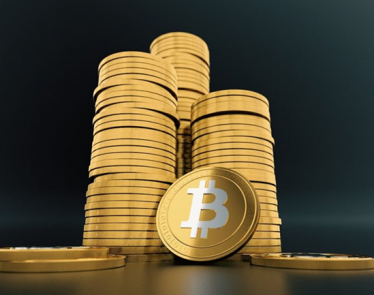
Scam? Bubble? One big millennial fad?
Whatever the critics are calling cryptocurrency today, it’s clear that the cryptocurrency rally this year has befuddled even the biggest skeptic. When most people hear cryptocurrency or blockchain, automatically they think of Bitcoin, which was the world’s first cryptocurrency developed back in 2009. The fear of missing out has an extremely powerful influence on many individuals financial decisions. Right now, it’s playing out in a big way as most who didn’t invest in a cryptocurrency before January seem to be kicking themselves now. As Bitcoin is now selling over $15,000 a coin, investors are frantically trying to find the next bitcoin to profit off of.
With over 1,300 alternative coins, it’s hard to choose which will be the next one that might take off. There are a few tactics to consider when choosing a cryptocurrency to invest in. George Tung, the co-founder of Cryptos R Us and vet digital currency investor, uses four simple rules when deciding to invest in an alternative coin.
Study
Study the founder and the team behind the coin. Where did they come from? What is their background? Are they backed by any person well-known in the crypto space?
Why?
Figure out why they felt the need to invent the coin. Are they solving a specific problem that needs solving? How useful is this coin?
Timeline
What is the roadmap for the coin? Where are they at currently? Do they have a beta out or a test-net? Are they looking to soft or hard fork in the near future? Any new features on the horizon by the development team on the project?
Value
Since a large majority of alt-coins get pumped and dumped, make sure to pay attention to the current market evaluation and make sure it is priced right. Also, you want to take a look at how many coins are in circulation, if you’re in it for the “HODL”, coins with large circulating supplies are highly unlikely to make you much money, in the long game
With all of that in mind, here are the top 5 alternative cryptocurrencies as said by many analysts to look out for in 2018 besides Bitcoin and Ethereum. All cryptocurrencies are subject to high volatility and risk and just like any investment strategy, it’s a good idea to do your homework before putting your money into something.
Dash (DASH)
(Formerly known as Darkcoin and XCoin)
- Market Cap: $8.5 Billion
- Who Created It? Evan Duffield. Former Software Developer at Wells Fargo (NYSE:WFC) and now the owner of Hawk Financial Group.
-
- Press Time: $1,073.77 down -25.4 percent on the day.
- Month: Up 93.1%
- Year-To-Date: Up 9487.2%
Released back in January of 2014, as XCoin (XCO) and was changed to “Darkcoin” in March of 2015. The coin was then rebranded to DASH shortly after. DASH has risen in value recently not by large PR gigs and weekend conferences but by technological innovation, alone. DASH provides the world’s first Decentralized Application Programming Interface (API) which allows users to receive and send payments by talking directly to the DASH masternode network. This eliminated the need for the user or the wallet provider to run their own node. All of the blockchains require increased bandwidth and grow over time, the DAPI removes a huge barrier for launching a new wallet service for users. The company has an “evolution wallet” that features DASH-accepting stores that allows you to pay, within the wallet. Evolution will also allow for recurring payments such as your insurance bill or Netflix, it can be automatically pulled from your account just like a standard checking account. Many merchants have begun accepting dash.
Litecoin (LTC)
- Market Cap: $13.5 Billion
- Who Created It? Former Google employee and star in the crypto space, Charlie Lee.
-
- Press Time: $248.83 down -20.12 percent on the day.
- Month: Up 249.9%
- Year-To-Date: Up 5646.65%
Lee created Litecoin back in 2011 and described it as an alternative Bitcoin. The biggest difference between the two is the amount of time spent to confirm new transactions. Currently, Bitcoin takes 10 minutes or more to validate blocks and Litecoin is only 2.5 minutes, which offers lower transaction fees. For a business looking to incorporate cryptocurrency into their payment method, smaller fees are much more appealing to businesses. Overstock has been accepting Bitcoin since 2014 and more and more retailers are starting to accept cryptocurrencies. With Litecoin’s high transaction speeds and low fees, it could become a platform cryptocurrency to be used in day-to-day purchases.
Bitcoin Cash (BCH)
- Market Cap: $40.6 Billion
- Who Created It? Bitcoin Cash was created by a team of developers that forked from the Bitcoin blockchain.
-
- Press Time: $2,416.37 down -24.94 percent on the day.
- Month: Up 86%
- Year-To-Date: Up 334.68%
Bitcoin Cash is among the newest of the cryptocurrencies, as the hard fork that initiated it was in August of 2017. Developers and users were frustrated by Bitcoin’s high fees and slow processing, thus creating a new cryptocurrency with a larger block limit. Like Litecoin, Bitcoin Cash has the capacity to handle more transactions at once, thus creating smaller fees. The biggest challenge that this coin faces is adoption. It has grown 334% in just a few months and back in November when Bitcoin’s blockchain became unprofitable to mine, many miners jumped ship to mine Bitcoin Cash. When this occurred, it topped Ethereum and became the second largest cryptocurrency by market value. If Bitcoin can’t figure out its scalability issues, Bitcoin Cash could just take its place.
Ripple (XRP)
- Market Cap: $40.5 Billion
- Who Created It? Ryan Fugger, a web developer. Chris Larsen, a businessman. Jed McCaleb, a programmer.
-
- Press Time: $.99 down -9.52 percent on the day.
- Month: Up 330.43%
- Year-To-Date: Up 16,400%
Former Bitcoin developers launched Ripple back in 2012 and by some, XRP is seen as Bitcoin’s logical successor. The New York Time at one point described the cryptocurrency as a cross between a “western union and a currency exchange” without the crazy fees. This is due to the fact that Ripple is not just a currency but a system and platform in which any currency can be traded on. XRP has licensed its blockchain technology to over 100 banks and a new hedge fund will be primarily denominated in XRP. However, Ripple holds a large circulating supply of 38.7 billion out of a max of 100 billion, which far surpasses most cryptocurrencies on the market.
Monero (XMR)
- Market Cap: $4.8 Billion
- Who Created? Like Bitcoin, Monero’s creator is anonymous.
-
- Press Time: $309.61 down -23.85 percent on the day.
- Month: Up 100.48%
- Year-To-Date: Up 2145.57%
The biggest thing that makes Monero stand out among the rest is Anonymity. With Monero’s blockchain, the details of every single transaction made, including the sender, receiver and size of the transaction are recorded but obfuscated to make it untraceable. Using this cryptocurrency means that there is no way for anyone to figure out if you were the one that sent them money. Many celebrities have endorsed the cryptocurrency and have begun accepting it as a form of payment for record and merchandise sales, including Lana Del Ray and Dolly Parton. However, there have been issues with cybercriminals demanding to be paid in Monero, for ransom for maliciously hacking computers. Monero doesn’t have a fixed coin supply and currently has 15.5 million coins in circulation.
Featured Image: depositphotos/kentoh












